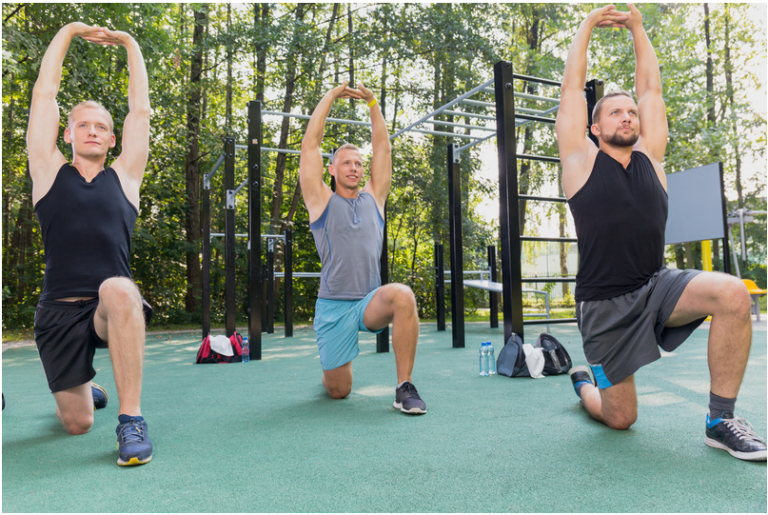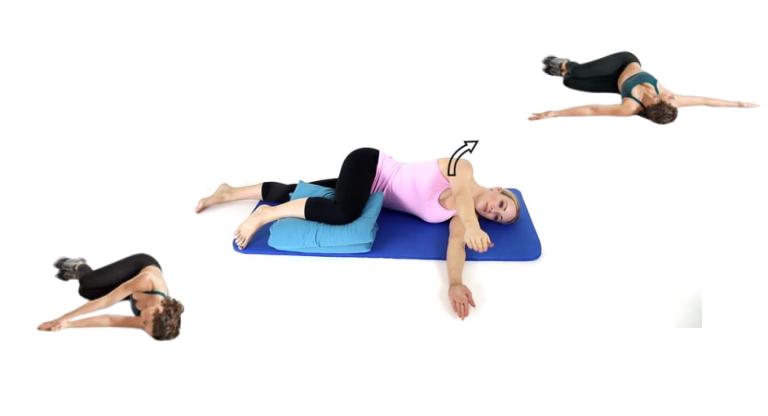
5 Must-Try Stretching Exercises For Whiplash to Relieve Pain Fast

Whiplash is one of the most common injuries resulting from car accidents, sports collisions, or any forceful jerking of the head and neck. If you’ve ever experienced the stinging pain, limited mobility, and muscle stiffness that come with whiplash, you know how debilitating it can be.
This condition, known as a whiplash-associated disorder, can significantly impact your quality of life. The good news is that specific stretching exercises for whiplash can provide relief and speed up recovery from this neck injury. This article is worth reading because it breaks down five easy yet effective stretching exercises for whiplash to reduce pain and regain your range of motion. Keep reading to learn whiplash stretching exercises you can do from home to heal your whiplash safely.
Key Takeaways
- Whiplash is a common neck injury caused by forceful jerking of the head and neck, often from car accidents
- Stretching exercises are crucial for relieving whiplash pain and restoring mobility and strength
- five easy stretches to try: chin tucks, head rotations, shoulder rolls, head tilts, chin-to-chest
- See a physical therapist if home exercises don’t improve symptoms within two weeks following a whiplash injury
- A soft neck brace may provide short-term support but could weaken muscles long-term
- Most whiplash resolves in 3 months with treatment, but 30% of cases become chronic
- Other therapies like massage, heat/cold, TENS, and injections may complement stretches/exercises
- Stay active with low-impact exercise, proper posture, and movement modifications during recovery
- Be patient and committed to your rehab plan for the fastest healing and best outcomes
What is Whiplash and What Causes It?

Whiplash, or whiplash-associated disorder (WAD), is a neck injury caused by the head and neck’s forceful, whip-like back-and-forth movement. This jerking motion can strain the cervical spine’s muscles, ligaments, discs, joints, and nerve roots beyond their normal range of motion. The most common causes are rear-end car accidents, contact sports like football, cycling accidents, physical abuse, and other high-impact collisions. Even minor fender benders can cause whiplash if the head is suddenly thrust forward, backward or to the side.
Common Symptoms of Whiplash You Shouldn’t Ignore
While whiplash symptoms typically appear within 24 hours of the injury, some patients may not experience issues for a few days. Common symptoms include neck pain and stiffness that worsens with movement, loss of range of motion in the neck, headaches, shoulder or upper back pain, tingling or numbness in the arms, fatigue, dizziness, and, in some cases, disturbing neurological effects like blurred vision or ringing in the ears. It’s important to see a healthcare provider if you experience these symptoms after a car accident or head/neck injury. Early treatment is key for preventing long-term whiplash-associated disorders.
Why Stretching Exercises Are Crucial for Whiplash Recovery
Stretching exercises are a staple of any whiplash treatment plan for good reason. When the head and neck are whipped forcefully, the cervical muscles, tendons and ligaments can become overstretched, torn, or sprained. This damage causes painful muscle spasms, stiffness, and inflammation around the neck and upper back, limiting mobility.
Gentle stretching helps relax and lengthen the tightened muscles to improve the range of motion. Stretches also promote blood circulation to the injured area, delivering nutrients to facilitate healing while flushing out inflammatory byproducts that cause pain. Over time, whiplash stretches increase flexibility and strength in the weakened muscles to stabilize the cervical spine and prevent future injury.
5 Simple But Effective Stretches to Relieve Whiplash Pain
Here are five easy stretches you can do at home to find relief from whiplash pain and stiffness:
1. Chin Tuck – This isometric exercise, recommended for whiplash, strengthens the neck muscles without straining them. Gently place your palm against your forehead and push your head against your palm without bending your neck. Hold for 5 seconds and release. Repeat ten times, incorporating this advice into your neck exercises routine following a whiplash injury.
2. Head Rotations – Slowly and gently rotate your head from side to side, being careful not to force the movement past the point of resistance. Repeat 10 times in each direction.
3. Shoulder Rolls – This stretch helps relieve muscle tension in the upper back and shoulders, particularly the shoulder blades, after whiplash. Slowly roll your shoulders backwards in a circular motion 10 times, then forwards 10 times.
4. Head Tilt – Gently move your head towards your shoulder until you feel a stretch down the opposite side of your neck, a beneficial move following a whiplash injury. Hold for 30 seconds, switch sides and repeat as part of a recommended 5-exercise routine for whiplash rehabilitation.
5. Chin to Chest – While seated, slowly lower your chin toward your chest until you feel a stretch in the back of your neck. Do not tilt your head backwards, which can exacerbate symptoms following a whiplash injury. Hold for 30 seconds.
Always move slowly and gently during these exercises. Never force or bounce the stretch, and stop if you feel sharp pain; this is especially important advice when performing exercises following a whiplash injury. Do 1-2 sets of 10-15 reps of each stretch 1-2 times per day.
When Should You See a Physical Therapist for Whiplash?
While whiplash often heals on its own with proper stretching, some patients may need professional physical therapy, especially for more severe WAD grades. See a physiotherapist if:
- Your pain and stiffness aren’t improving after 1-2 weeks of home stretching and performing whiplash exercises.
- You have numbness, tingling or weakness in your arms/hands
- The headache or other neurological symptoms persist
- You’ve lost a significant range of neck motion
A physical therapist can provide manual therapy, therapeutic exercises, ultrasound, electrical stimulation and other treatments to relieve whiplash pain, restore mobility, and retrain your muscles to prevent chronic issues.
Can a Neck Brace Help Whiplash Heal Faster?
Using a soft neck collar or brace is controversial for whiplash treatment, as studies show conflicting evidence. Some experts believe wearing a brace can provide support, relieve muscle strain and allow the ligaments to heal initially after the injury. However, prolonged use may weaken the neck muscles, slowing recovery.
Many physiotherapists recommend only wearing a brace for short periods (1-2 weeks max) combined with active stretching and exercises to stabilize the neck muscles. Your healthcare provider can advise if a neck brace is appropriate for your specific whiplash injury. Staying active and doing prescribed stretches daily is generally recommended over prolonged bracing.
How Long Does It Typically Take to Recover from Whiplash?
Most cases of acute whiplash resolve within 3 months with proper care and rehabilitation exercises. However, recovery time can vary depending on your injury’s severity, age, physical conditioning beforehand, and if you receive prompt treatment. About 50% of people fully recover from whiplash within a year, while an estimated 30% have lingering pain, headaches or other symptoms even after that.
Adhering closely to your prescribed whiplash treatment plan involving stretches, exercises, physical therapy modalities, and any medications is key to achieving a full recovery in the shortest time possible. Giving your body the time and care it needs to heal completely is important to prevent chronic whiplash-associated disorders down the line.
Other Treatment Options for Whiplash-Associated Disorders
Along with stretching and physical therapy exercises, other evidence-based treatments may also help manage whiplash, including:
- Over-the-counter anti-inflammatory medications can help manage symptoms of whiplash-associated disorder.
- Therapeutic massage
- Application of heat or ice to reduce pain/swelling
- Transcutaneous electrical nerve stimulation (TENS)
- Interventional treatments like therapeutic injections
- Acupuncture
- Mind-body approaches like relaxation therapies
Your physician or physical therapist can recommend appropriate adjunct therapies as part of a comprehensive whiplash rehabilitation program.
Tips to Prevent Further Neck Injury During the Whiplash Recovery Process
As you heal from whiplash, avoiding re-injuring or overstressing your recovering neck muscles and ligaments is important. Follow these tips:
- Use proper posture when sitting, standing, and sleeping
- Take frequent stretch breaks if sitting for long periods
- Avoid activities that require excessive neck twisting/bending
- Don’t carry heavy loads on one shoulder
- Consider modifying high-risk sports while still recovering
- Apply a cold pack after physical activity to reduce inflammation
Stay in close contact with your physical therapist about which activities and exercises are safe as you progress through whiplash recovery.
Don’t Let Whiplash Keep You Down – Stay Active!
While you’ll need to temporarily modify high-impact exercises, staying physically active in other ways is crucial for whiplash rehabilitation. Low-impact activities like walking, swimming, cycling or using an elliptical machine can promote blood flow and healing without further stressing the neck. Light strength training and core exercises can also be very beneficial once cleared by your provider.
The key is to find an enjoyable routine that keeps you moving regularly without aggravating your whiplash symptoms. Commit to an active lifestyle during recovery; your body will thank you with a smoother, faster healing process.
In Conclusion:
Suffering from whiplash can be an extremely painful and debilitating experience. However, doing the right stretching exercises for whiplash can provide significant relief and help speed up your recovery. The five stretches outlined in this article – chin tucks, head rotations, shoulder rolls, head tilts, and chin-to-chest – are simple yet effective stretching exercises for whiplash that you can perform at home.
Be patient and consistent when doing these whiplash stretching exercises as prescribed, and you’ll help reduce your pain and stiffness while regaining mobility in your neck. Don’t hesitate also to seek professional physical therapy if your whiplash symptoms persist beyond a couple of weeks. With dedication to your stretching routine and treatment plan, you can get back to living a pain-free, active life after your whiplash injury.
Regular stretching provides healing benefits when you’re suffering from whiplash and can also help prevent future neck injuries and chronic issues. Make these simple yet effective stretching exercises for whiplash a lifelong habit for a healthy, pain-free neck and spine.
References
- According to a systematic review and meta-analysis published in The Spine Journal, exercise interventions were effective in reducing pain and improving function in patients suffering from whiplash-associated disorders (https://www.thespinejournalonline.com/article/S1529-9430(14)00857-5/fulltext)
- A randomized controlled trial from the Journal of Orthopaedic & Sports Physical Therapy found that patients with whiplash who received exercise and advice had significantly lower levels of pain and disability compared to those just given pain education (https://www.jospt.org/doi/10.2519/jospt.2014.4964)
- Research published in the Clinical Rehabilitation journal demonstrated that a multimodal treatment approach, including exercise, was effective in improving pain, range of motion and quality of life in acute whiplash patients (https://journals.sagepub.com/doi/abs/10.1191/0269215505cr927oa)
- The American Physical Therapy Association’s clinical practice guidelines recommend the inclusion of therapeutic exercise, especially neck strengthening, mobility and isometric exercises, as part of the rehabilitation program for whiplash-associated disorders (https://www.orthopt.org/uploads/content_files/CPG/Neck/neck.pdf)
- A study in the Journal of Manipulative and Physiological Therapeutics concluded that stretching exercises aimed at improving neck mobility were an important component of multimodal therapy for reducing pain and disability from whiplash injuries (https://www.jmptonline.org/article/S0161-4754(13)00158-4/fulltext)



